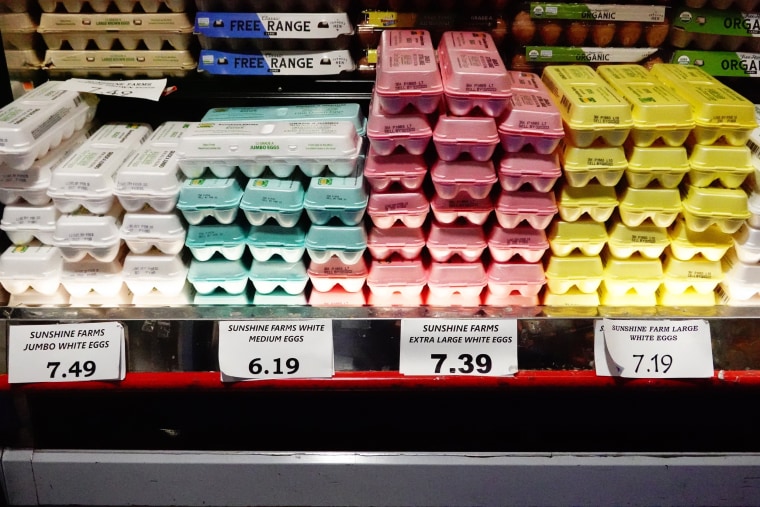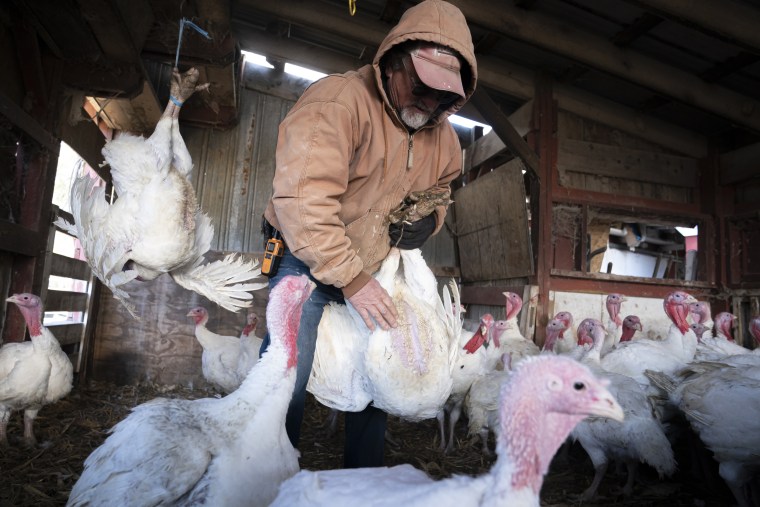The worst outbreak of avian influenza on record is threatening to stretch into a second year, as the U.S. races to contain a virus that has already caused some food prices to soar amid a shortage of eggs.
Nearly 58 million birds from commercial and backyard flocks have been wiped out in the U.S. since last February, according to the U.S. Department of Agriculture’s Animal and Plant Health Inspection Service.
Experts say the virus, known as Highly Pathogenic Avian Influenza, or HPAI, has been difficult to contain because it appears to be more prevalent in wild birds now than during previous outbreaks — a development that also makes future infections more likely. And while the risk of the virus spilling over into humans remains low, scientists say communities will feel the consequences of such a serious and lengthy outbreak for months to come.
“As it is now, this is the largest animal emergency that the USDA has faced in this country,” said Gino Lorenzoni, an assistant professor of poultry science and avian health at Pennsylvania State University.
More than 40 million egg-laying hens have been culled in the U.S. alone, causing the price of eggs nationwide to skyrocket, Lorenzoni said. Months earlier, the “bird flu” outbreak drove the cost of turkey meat to record highs.
The virus can take commercial poultry farms out of commission for extended periods.
“They have to remove dead birds, disinfect their facility and bring new birds in — that’s a several-month process to do that,” said Kevin Snekvik, the executive director of the Washington Animal Disease Diagnostic Laboratory at Washington State University. “That’s when production of eggs is hammered.”

Efforts to prevent infections in commercial and backyard flocks are ongoing, but slowing the outbreak has been challenging because the virus seems to have gained a foothold in species of wild birds, said Biao He, a professor of infectious diseases at the University of Georgia College of Veterinary Medicine.
As these birds migrate, crisscrossing continents and oceans, they can carry the virus with them.
“That’s how the virus can go from Asia to Europe to North America — all the way around the world,” He said.
Poultry can become infected through direct exposure to wild birds but more likely from fecal matter that contaminates the ground around farms or yards.
Once that happens, entire flocks typically need to be culled.
“The virus transmits very, very rapidly within the flock, so even if birds don’t appear sick, they will eventually die very soon,” Lorenzoni said. “The best way to stop the spread of the disease is if we eliminate all the birds that are in close contact with the contaminated birds.”

Monitoring and prevention of avian influenza has improved since the last major outbreak in 2015, Lorenzoni said, when roughly 50 million birds were killed over six months. The USDA’s “Defend the Flock Program” includes, for instance, information on biosecurity measures and how to spot signs of illness.
Still, the scale of the spread is putting strain on animal health laboratories. Suresh Kuchipudi, the interim director of the Animal Diagnostic Laboratory at Pennsylvania State University, said three animal testing laboratories in Pennsylvania are processing several thousand samples each week. His lab is largely operating seven days a week.
“The spread is much more complex than what we normally predict,” Kuchipudi said. “Nothing like this has happened in the past and the question is — what has changed?”
The virus’s prevalence in the wild presents new challenges for its containment. Many migrating birds are not sickened by bird flu, which means it’s not well understood just how widespread it is in the wild, Lorenzoni added.
Local weather conditions also influence how the virus spreads. The sun can, for instance, naturally disinfect surfaces while gloomier days help viral particles survive on surfaces contaminated by infected bird poop, Lorenzoni said.
And if the outbreak lingers into spring, infections could become even more difficult to prevent as a new wave of bird migrations begin.
There are also concerns that the virus could mutate as it continues to spread or infect other animals. Though experts have said the virus rarely infects humans, HPAI has been detected in mammals such as skunks, raccoons, harbor seals, red foxes and bears, according to the USDA.
If allowed to spread unfettered, the pathogen could evolve in such a way that makes it more devastating or harder to control.
“A virus is single-minded: It has to replicate, to reproduce,” He said. “With all those replications, it can accumulate a lot of different changes. This is happening as we speak, and this is why I’m afraid influenza is going to be with us for a long while.”

